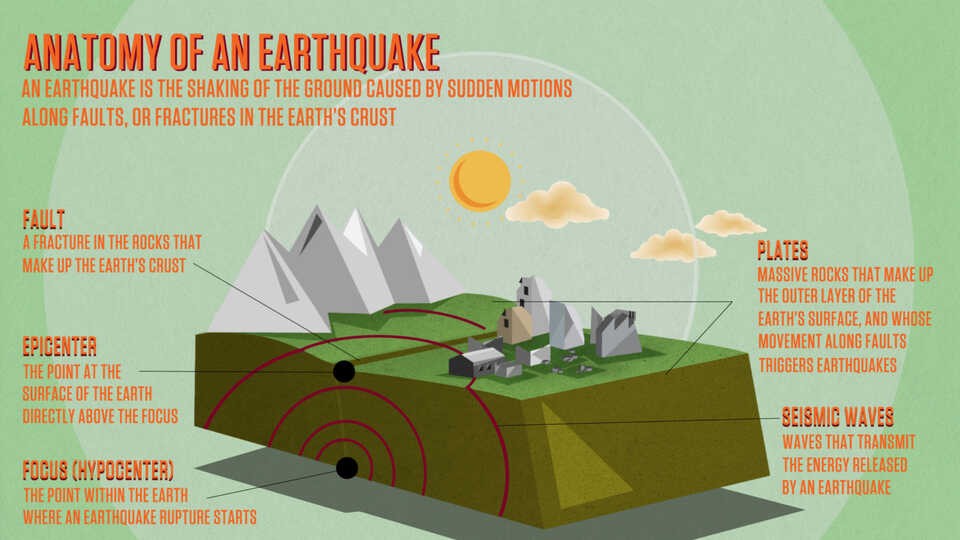The ground beneath our feet may seem solid, but it’s constantly shifting due to the movement of tectonic plates. This movement can result in a sudden release of energy, causing the ground to shake in what we know as an earthquake. Understanding the earthquake focus, also known as the hypocenter, is crucial to comprehending the mechanics of these powerful natural events.
 Anatomy of an Earthquake
Anatomy of an Earthquake
What is the Earthquake Focus Fault?
The Earth’s crust is composed of numerous tectonic plates, large pieces of rock that are constantly interacting. These plates slide past each other, collide, or move apart along fault lines. Friction along these fault zones can cause the plates to become temporarily locked, building up immense pressure. The Focus Fault or hypocenter, is the precise location within the Earth’s crust where this built-up stress finally ruptures, initiating the earthquake. It’s the point from which seismic waves radiate outward in all directions.
Focus vs. Epicenter: Understanding the Difference
While the focus fault represents the earthquake’s origin point deep within the Earth, the epicenter is the point on the Earth’s surface directly above the focus. While both terms are related to the earthquake’s location, they represent different perspectives:
- Focus (Hypocenter): The three-dimensional location within the Earth where the earthquake rupture begins. This can be miles beneath the surface.
- Epicenter: The two-dimensional location on the Earth’s surface directly above the focus. This is often the area that experiences the most intense shaking.
The Role of Seismic Waves
When the rupture occurs at the focus fault, the stored energy is released in the form of seismic waves. These waves travel through the Earth, causing the ground to shake. There are different types of seismic waves:
- P-waves (Primary waves): These compressional waves are the fastest and can travel through solids, liquids, and gases.
- S-waves (Secondary waves): These shear waves are slower and can only travel through solids.
- Surface waves: These waves travel along the Earth’s surface and are responsible for most of the damage during an earthquake.
Determining the Focus Fault
Seismologists use seismographs, instruments that record ground motion, to determine the location of the focus fault. By analyzing the arrival times of seismic waves at different stations, they can triangulate the focus’s depth and location. This information is crucial for understanding earthquake patterns, assessing risk, and developing mitigation strategies.
Conclusion: The Importance of Understanding the Focus Fault
The earthquake focus fault is the point of origin for these powerful geological events. Understanding its role in initiating earthquakes and generating seismic waves is fundamental to comprehending the complex processes that shape our planet. This knowledge allows scientists to better monitor earthquake activity, assess potential hazards, and educate the public on earthquake preparedness. While we cannot prevent earthquakes, understanding their underlying mechanisms, starting with the focus fault, is the first step towards mitigating their devastating effects.
